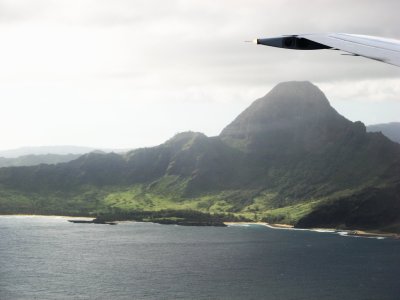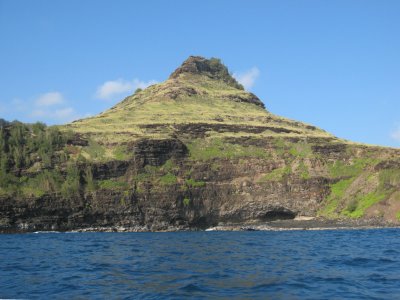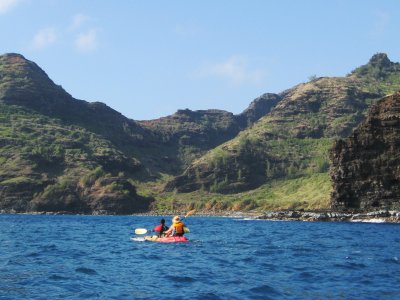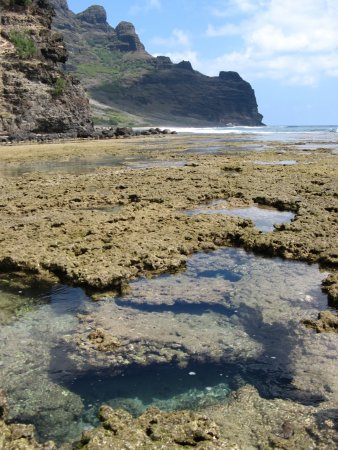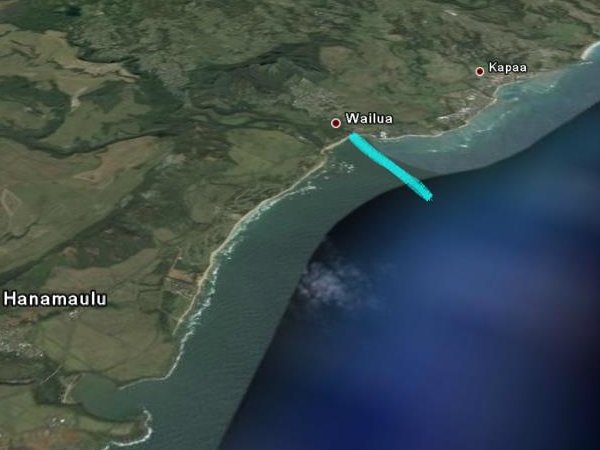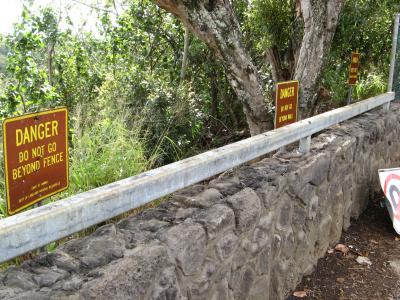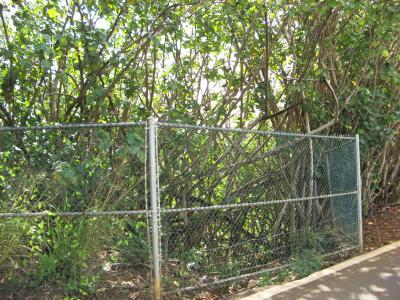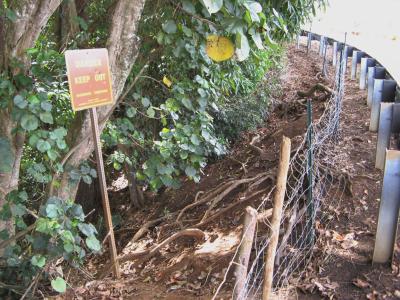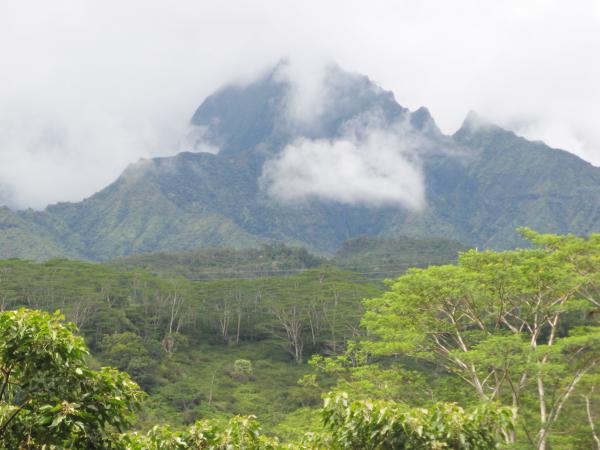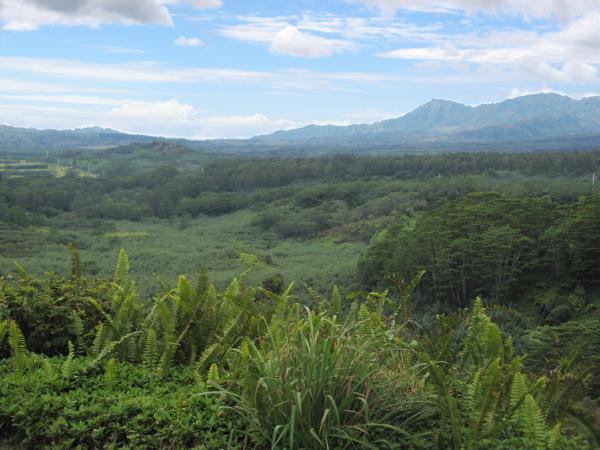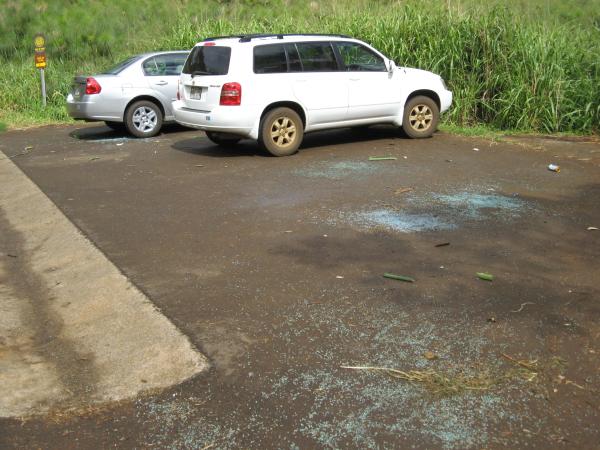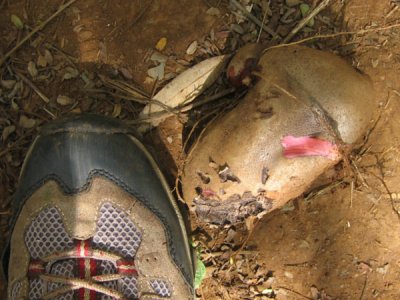Kipu Kai is a large cove on the south-east coast of Kauai, between Lihue and Poipu. It has about 2 miles of shoreline, more than half of it sandy beach. This area is nearly cut off from land access by two ridges that go down to the ocean at right angles from Mount Haupu. The wedge of land in between the ridges, as well as the only access road over them is private and closely guarded, but the beach up to the high wash of storm waves is public by law.
The combination of remoteness, seclusion, and sandy beach makes it one of those mythic “forbidden” places, coveted by modern-day explorers. Needless to say, I’ve always wanted to go there.
|
||
|
You can also see Kipu Kai from some of the boat tours, as well as one of the ATV rides, but all of them from a distance. Fishing boats must go by here all the time, but to stand on the beach, you have to either jump from a boat or paddle in on a kayak.
With the calm seas we’ve been having recently, fellow adventurers and neighbors Randy and Ronnie proposed we do just that. It was so calm that my wife and I brought along our 2-year old daughter. We had two choices for which route to take, either from Nawiliwili harbor area or from Kawailoa bay at the end of the dirt road in Mahaulepu. It’s about 2 miles of paddling from Mahaulepu and 4 from Nawiliwili, but coming from Kapaa, we figured we’d rather spend the time in the kayak rather than in the car.
That was actually a fortunate decision because we were experiencing Kona weather, with the wind and the swell from the south. That meant that we went against them when they were mild in the morning, and they pushed us along when they both picked up in the afternoon. Here’s the map of our route, which you can download if you have Google Earth.

The easiest place to lauch a kayak at Nawiliwili is at the beach park on Niumalu road, behind the small boat harbor. We had a later start than planned, so to save a bit of time (about half a mile each way) we drove through the Marriott Resort, parked at the bottom and carried the boats onto Kalapaki beach. From there, we had a straight view of our intended route across of the shipping channel, behind the behind the breakwater, and beyond to the farthest point where we turn for Kipu Kai:
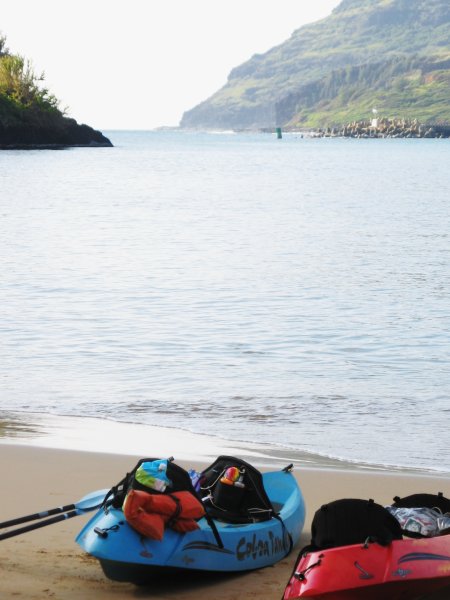
|
||
|
When we rounded the “furthest” point we could finally see towards Kipu Kai. The waves and wind picked up a bit, now that we were more exposed to the southerly pattern. The coastline here consists of steep ridges, with rocky cliffs that face the sea. After passing the point of the next cliff, we caught good views of the beach already, looking like they were just beyond the next point.
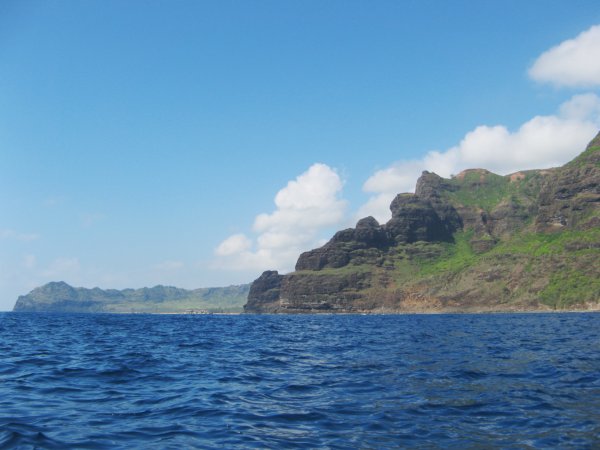
But looks are deceiving from sea level, and we were barely more that half-way there. It took another hour of paddling into the wind and waves to finally reach the small bay at Kipu Kai itself. Mahaulepu is another 2 miles beyond the furthest point in the photo above.
|
||
|
We land at last, after 2h15 of paddling it felt good to stretch our legs and rest our arms. We had a picnic lunch in the shade of the rocks of the picture above, since it’s forbidden to walk off the beach into the trees above. There is also a sign that says not to climb on the rocks—I don’t think steep rocky coasts have a public right-of-way like beaches. I have heard they keep a keen eye on visitors to make sure no one is tempted. We did see someone leave the house on an ATV, but I never saw whether they came to watch us or some other ranch business.
Speaking of ATVs, the private dirt road to Kipu Kai goes through the low notch in the ridge above the house. One of the ATV tours goes up to that col, but not down into Kipu Kai, click for the view from up there, and then tell me where you’d rather be.
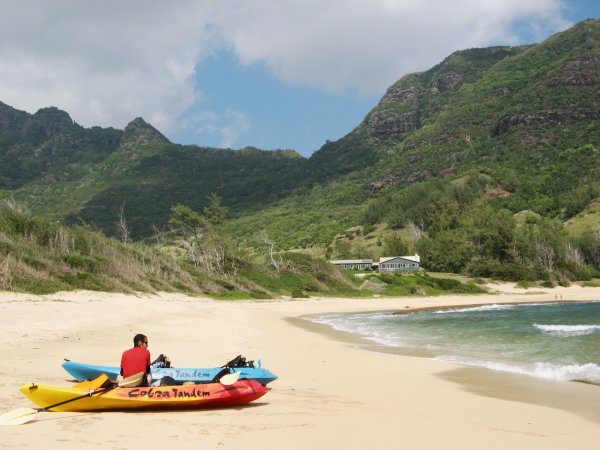
Then we went to expolre all the beaches we could walk to from here, which included the main beach above, and some smaller ones we saw on the way in. You can see where we went in the yellow path on the map above. The people on the beach above retreated to the house after we landed, so we had the place to ourselves. They must have been members or guests of the family who own the land, but I’m not sure if anyone lives in the house permanently or wether it’s just a weekend retreat.
At the end of the first beach is a wide expanse of extremely shallow reef. It is very flat and had less than an inch of water, none in places so we walked carefully on it. In little pools that were deeper, there were intact pink coral, sea cucumbers, and in one, juvenile pennant butterflyfish.
|
|||
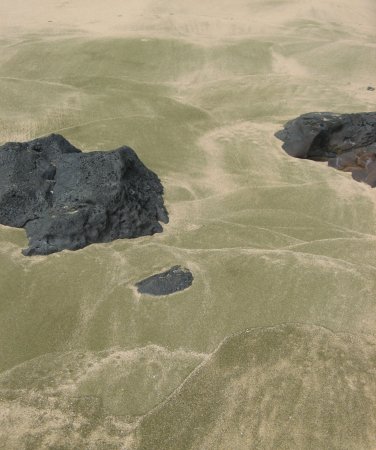 |
 |
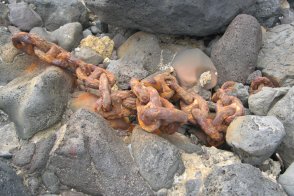 |
 |
After the shallow reef, we climbed through some short rocky stretches to access the further beaches. Here were some nice stretches of sand without footprints, at least until we arrived. These beaches are at the foot of steep slopes reaching up to the high ridges. In places where runoff usually flows down from theses slopes, it has carried the green olivine crystals from the volcanic rock down to color the beach. The reef still continues here, so there is no swimming, just laying on the warm sand and staring up at the cliffs, in a way that reminded me more of Kalalau than any other place.
On the way back to the kayaks, we stayed in the rocky areas instead of the reef and found the two large pieces of maritime trash—yet both very artistic in their own way. My first impulse was to want to take them home, then I realized that I could never carry them on a kayak, and secondly it was their contrast with the relatively pristine surroundings that gave them their character.
Back on the main beach, we could look back and see the other beaches we had walked to. We could also see that the waves were getting larger, so we had better not linger:
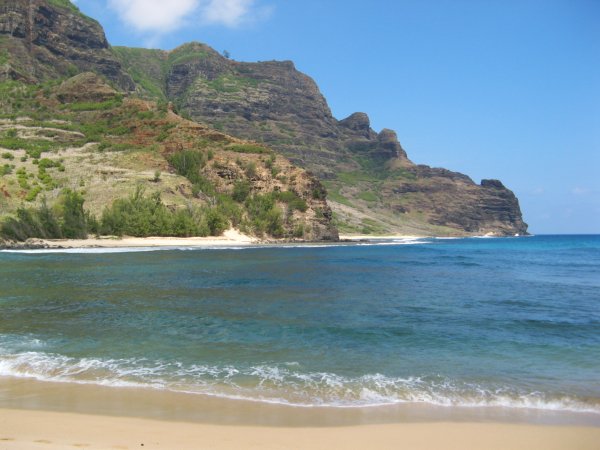
With over 4 miles of paddling ahead of us, we never even considered going to the two other main beaches to the south. Those would have to wait for another flat ocean day, and probably be wiser to attempt from Mahaulepu. The swells were noticebly larger than in the morning, perhaps the largest I’ve done in our little kayak. We pitched and rolled a little, but no waves were breaking on us and we were never in any danger of tipping over.
On the first leg of the return, the waves were coming mostly from behind, but at angle. The caused the kayak to turn, and since have a rudderless kayak that the rear paddler steers by changing the stroke, I was working extra hard. Now I understand why ocean kayaks usually have little rudders that can adjust for this. Still, the wind was at our backs and really helping us along the whole way. Plus, once we turned past the big point to head for the harbor, the waves were straight behind us and we could surf a little down each wave. In the end, it only took us 1h30 to paddle back, 1/3 less time than going.
But just because I’ve gotten into the habit of finishing with the bad news, here are two views of the development going on at the Marriott Lagoons, between the port and the airport. You can see the little detour we made on the return paddle in green on the map above.
|
||
|
So it was little surprise it was being redeveloped. And from one of their ads, it seemed they were offering low-rise condos, from an aestethic viewpoint better than 4-story boxes or spread-out luxury homes. But on the picture above, you can clearly see that they’ve created a huge artificial hill, to create more valuable real-estate overlooking the ocean. In my mind, that should not be permitted because it destroys the natural topography, crowds the shoreline, and runs the risk of eroding faster. I’ve never been to Ninini (running waters), the little beach you can see below the development, but I’d be willing to bet that many more buildings will now be visible from that beach. And now those visions of Kipu Kai seem even more precious.






